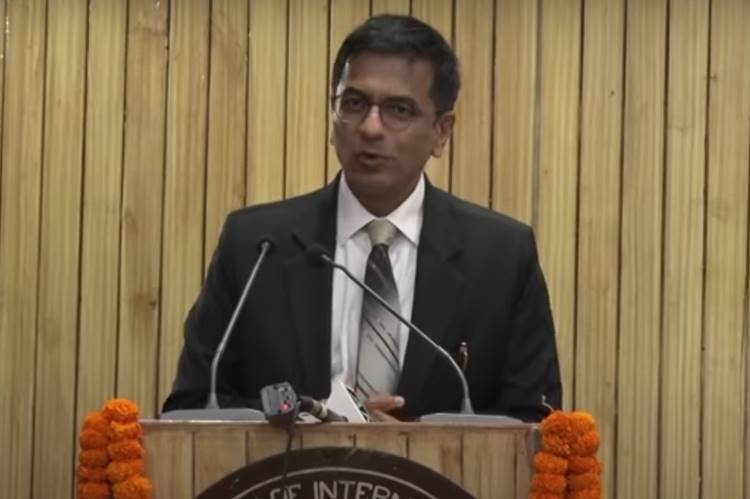
As India celebrates its 74rd Republic Day, the country’s judiciary and executive are locked in a tussle over the basic structure doctrine, considered by many as the guiding light for those who run the country.
“The basic structure or the philosophy of our Constitution is premised on the supremacy of the Constitution, rule of law, separation of powers, judicial review, secularism, federalism, freedom and the dignity of the individual and the unity and integrity of the nation,” said D Y Chandrachud, the Chief Justice of India, while delivering the Nani A Palkhivala Memorial Lecture in Mumbai last week.
The basic structure doctrine
Justice Chandrachud’s comment is seen as a response to Vice President Jagdeep Dhankhar’s remarks who said the Kesavananda Bharati case verdict of 1973 which propounded the basic structure doctrine set a bad precedent. He went on to say that it would be difficult to say “we are a democratic nation” if any authority can question Parliament’s power to amend the Constitution. Since 1973, several Constitutional amendments including the NJAC Act on the appointment of judges in the higher judiciary were quashed on the basis of the basic structure doctrine.
There have been several instances where the executive and the judiciary sparred over their powers. The current bout started in November last year when law minister Kiran Rijiju commented adversely on the collegium system for the appointment of judges to the high courts and the Supreme Court. The minister said that the system is opaque and not accountable to any authority. He criticised the Supreme Court decision to strike down the National Judicial Appointment Commission Act, 2015 and restore its powers to appoint judges to the higher judiciary.
READ I The Great Indian House Trap: Burden of household work and labour force participation
Collegium system at the heart of the tussle
One can safely say that the selection of judges to the higher judiciary is at the centre of the ongoing feud between the judiciary and the executive. Under the Collegium system, the Chief Justice of India and four senior-most Supreme Court judges recommend the appointments and transfers of judges. The striking down of the NJAC Act that sought to include a government nominee in the decision-making process for shortlisting of judges seems to have created a deep division between the pillars of the Indian state.
The Court asserted that it is the final arbiter of law under the Constitutional scheme and that the government is obliged to accept all names recommended by the Collegium. The Court also reprimanded Union ministers for criticizing the Collegium system and called on them to control themselves. The opposition parties criticised the government for what they see as an attempt to intimidate and capture the judiciary.
READ I Govt proposes changes to Insolvency and Bankruptcy Code
Critics of the Collegium system argue that it is opaque, promotes nepotism, and is not representative of the diverse population of India as nearly 80% of new High Court judges appointed in the last five years belonged to upper castes. Additionally, the Collegium system is not mentioned in the Constitution and has evolved over time through judicial interpretation. The government also argues that the current system is undemocratic as judges are not elected by the people and are not accountable to them.
The tussle between the judiciary and executive over the Collegium system and the basic structure of the Constitution highlights the delicate balance of power and the need to maintain the separation of powers and the independence of the judiciary in a democratic nation. It reminds that any change to the system of selecting judges is made with great care and consideration. There may be several flaws in the way judges are selected in the country, but a solution should be arrived at through consultations involving both the judges, eminent jurists, and the political leadership.
